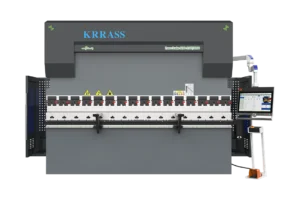CNC bending machines are versatile and powerful tools in metal processing that can bend and form sheet metal into a variety of shapes. These machines use multiple axes controlled by a computer numerical control (CNC) system to achieve precise and repeatable bending operations. This article explores the different axes commonly found on CNC press brakes, their functions, and their significance in the bending process.
Table of contents:
Introduction to CNC bending machine
Shaft types on CNC bending machines
Functions of CNC bending machine axis
The significance of the central axis of the CNC bending machine
Conclusion
1. Introduction to CNC bending machine:
CNC press brakes use multiple axes working together to facilitate precise, efficient metal bending. Each axis controls a specific movement of machine components such as rams, back gauges, and tools. Understanding the function and significance of these axes is crucial to optimizing the bending process and achieving the desired results.
2. Types of CNC bending machine shafts:
The most common axes on CNC press brakes include:
X-axis: controls the lateral movement of the ram (left and right).
Y axis: controls the vertical movement of the ram (up and down).
Z axis: controls the forward and backward movement of the ram.
R axis: controls the rotation (bending angle) of the ram.
W axis: controls the width adjustment of the back gauge.
C axis: Controls the crown of the ram (compensates for material deflection).
A-axis: controls the angle of the back gauge.
B axis: controls the rotation of the back gauge.

3. Functions of CNC bending machine shaft:
The main functions of each axis on the CNC bending machine are as follows:
X- and Y-axis: These axes control the positioning of the ram on the workpiece, ensuring precise placement of the bend.
Z-Axis: This axis controls the depth of the bend, determining the angle and shape of the final product.
R-axis: This axis allows precise control of the bending angle, enabling the creation of complex shapes and angles.
W axis: This axis adjusts the back gauge to accommodate different workpiece sizes and shapes.
C-Axis: This axis compensates for material deformation during bending, ensuring accurate and consistent results.
A-axis and B-axis: These axes enable the back gauge to rotate and tilt, facilitating complex bending operations.
4. The meaning of each axis in the CNC bending machine:
The axes on a CNC bending machine play a key role in the bending process in the following ways:
Ensure accurate positioning of the ram and back gauge.
Control the depth and angle of the bend.
Ability to create complex shapes and angles.
Adapt to different workpiece sizes and shapes.
Compensates for material deformation.
Facilitates complex bending operations.
Precise coordination and control of these axes is critical to achieving high-quality, repeatable bending results.

5. Conclusion:
The CNC bending machine axis is the basis for the precise and efficient bending of metal sheets. By understanding the function and significance of each axis, operators can optimize the bending process and achieve the desired results. Additionally, proper maintenance and alignment of axes are critical to ensuring machine accuracy and longevity.




